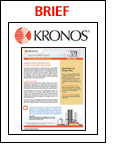10 Essential Components For a Safer Working Environment
Monday, December 13, 2010
No matter where you are or work, safety is crucially an important issue that cannot be ignored. I have experienced a number of accidents throughout my years as an engineer and that's why I must emphasize this seriously. Luckily the accidents I was involved in were not fatal. On top of my personal accidents, I also witness some fatal accidents and also near death incidents.
That is why every time before commencing a job/project or event a shift, it is important to conduct safety briefing. It doesn't matter if it is a short meeting or a casual one (normally in between shift in a plant). For huge project, a more intense
 meeting / documentation such as Job Safety Analysis (JSA), Method of Statement (MOS) plus filling up permit to work (PTW) and hot work /cold work permit is imperative. As an engineer, it is our duty to ensure the safety of the entire project or area under our responsibility. Safety involves our manpower, equipment and so on.
meeting / documentation such as Job Safety Analysis (JSA), Method of Statement (MOS) plus filling up permit to work (PTW) and hot work /cold work permit is imperative. As an engineer, it is our duty to ensure the safety of the entire project or area under our responsibility. Safety involves our manpower, equipment and so on.So, what and how do we create a safety working environment? To answer that question, I consulted with Mr. Mitchell, an experienced guy who specializes in workplace behavioral change through performance management.
According to him, a safe working environment is a condition or state, it is not necessarily an event like an incident of an accident. This means that the low number of incidents or accidents doesn't mean that the workplace is particularly safe. What really counts is the process of safety because it is an integral part of every day activities in the workplace. There are a number of activities which are clear indicators of a safe working environment and this article lists 10 of them.
- Daily safety briefings. Every morning at the beginning of the work day or the shift, the leader holds an interactive safety briefing with his or her team. It lasts less than 10 minutes and has contributions from the team members.
- Weekly inspections to identify unsafe conditions. Every staff member participates in turn and conducts a regular safety inspection where they look for hazards and unsafe conditions. This can occur weekly or twice a week.
- Weekly inspections to identify unsafe behavior. Each week two staff members carry out a regular inspection where they are identifying unsafe behavior. The objective is to identify the unsafe behavior and mention it at the next daily safety briefing. Of course no names are mentioned.
- Accident and incident investigation. Every accident or near accident is investigated with the sole objective of prevention in the future. The process of investigation is not a witch hunt to apportion blame
- Constant improvement. During the daily safety briefings, the group members have an opportunity to recommend and discuss improvements to the workplace and the processes that are carried out within it
- Reporting near hits. Every single near hit (this is an incident where no damage or injury occurs) is investigated and prevention measures are put in place so it will not happen again.
- Positive reinforcement. Each day the leader goes into the workplace and gives positive reinforcement to those members of staff for working safely. This encouragement and enthusiasm for safety is a great motivator for safe working practices.
- Blame. It is noticeable that all safe working environments do not use blame or punishment as tools for creating safe behavior. Instead, they use positive reinforcement, encouragement and recognition.
- Practical on-the-job training. Group members are continually receiving on-the-job training from experts within the company and outside.
- Effective leadership. Is no coincidence that all safe workplace environments have good leadership. This means that the leader is prepared to listen and has the skills to create followers. These leaders engender cooperation and most of all discretionary effort. They are the main reason why people are working safely. They are not invisible and spend between 30 and 50% of their time with their team members.
For much more information on this and related subjects, you are welcome to visit the http://plmitchell.com/.
Bottom line, in what ever you do no matter during work or out of work, think about safety. Think about those love ones who are waiting for you at home... :)
For further reading on this Safety Working Environment topic, I highly recommend you to get this article: Support OSHA Compliance and Create a Safer Work Environment.
 Find out how automating workforce management policies help to improve workplace safety and allows you to meet documentation requirements for OSHA compliance. With workforce management solutions, energy companies can create a safer work environment and maintain compliance. Download this brief to learn more about how you can put safety first while complying with OSHA.
Find out how automating workforce management policies help to improve workplace safety and allows you to meet documentation requirements for OSHA compliance. With workforce management solutions, energy companies can create a safer work environment and maintain compliance. Download this brief to learn more about how you can put safety first while complying with OSHA.
Get the FREE article HERE.
.
Labels: Accident, Chemical Engineer, Chemical Engineering, Environmental, Equipments, Safety
posted by Kipas Repair JB @ 6:17 PM,
![]()
0 Comments:
The Author

I’m Zaki. I used to be a project, process and chemical engineer. Few years ago I successfully became a Chartered Engineer (IChemE) and Professional Engineer (BEM). I'm now employed as a chemical engineering educator/researcher/consultant. Hope you like reading my blog. I welcome any feedback from you. My email: zaki.yz[alias]gmail.com. TQ!


